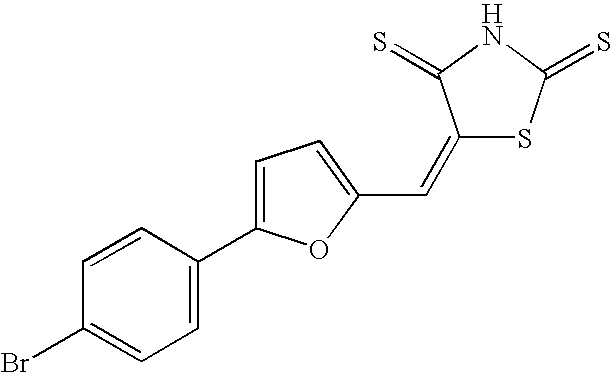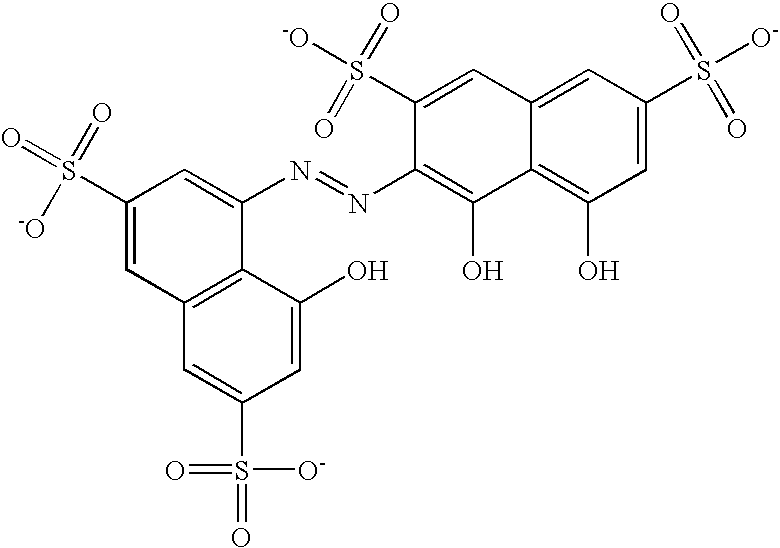Compositions and methods for inhibiting the enzymatic activity of PTP-1B
a technology of enzymatic activity and compound, which is applied in the field of compounding methods and inhibiting the enzymatic activity of ptp-1b, can solve problems such as unreachable studies, and achieve the effect of reducing the enzymatic activity
- Summary
- Abstract
- Description
- Claims
- Application Information
AI Technical Summary
Benefits of technology
Problems solved by technology
Method used
Image
Examples
example 1
Construction of the Targeting Vector
[0106] In order to construct the targeting vector, the mouse PTP-1B gene was cloned from a 129 / Sv mouse genomic library and characterized. The mouse PTP-1B gene was isolated by screening a Lambda FIX II 129 / SvJ mouse genomic library (Stratagene, La Jolla, Calif.) using the human (GENBANK accession no. M317324; see also Chernoff et al., 1990, Proc. Natl. Acad. Sci. USA 87:2735-2739) and mouse (GENBANK accession no. M97590; see also Miyasaka et al., 1990, Biochem. Biophys. Res. Comm. 185:818-825) PTP-1B cDNAs as probes. Three overlapping lambda clones were isolated and the genomic organization and exon sequences of the mouse PTP-1B gene were determined. The three lambda clones contained the majority of the PTP-1B gene except for the 5′ flanking region and the first 190-bp of the cDNA (FIG. 1A). The gene is composed of at least 9 exons spanning greater than 20-kb. A targeting vector (FIG. 1A) was made by deleting genomic sequences that included exon...
example 2
Production of Knockout Mice
[0107] The targeting vector was electroporated into 129 / Sv embryonic stem cells (J1) and G418 resistant colonies were selected as described previously (You-Ten et. al., 1997, J. Exp. Med. 186:683-693). J1 cells are meant to be illustrative only. Other embryonic stem cell lines are suitable as well, e.g., ES-D3 cells (ATCC catalogue no. CRL-1934). Colonies resistant to G418 were analyzed for homologous recombination by BamHI digestion of genomic DNA followed by Southern blotting and hybridization with probe A. Probe A is the 800-bp XhoI / BamHI fragment shown as “3′ probe” in FIG. 1A. Approximately 2% of the resistant colonies underwent a homologous recombination event. Two of these G418 resistant ES cell clones were then used for microinjection into BALB / c blactocysts as described previously (You-Ten et. al., 1997, J. Exp. Med. 186:683-693). Germline transmission was obtained for each line and F1 heterozygotes were mated to produce animals homozygous for th...
example 3
Glucose and Insulin Levels in Knockout Mice Fed a Normal Diet
[0108] Glucose and insulin levels were measured in fasted and fed mice on a normal, i.e., non-high fat, non-high carbohydrate, diet (FIG. 2). In the fed state the null mice had a significant (P≦0.01) 13% reduction in blood glucose levels compared to wild-type mice, whereas the heterozygotes had an 8% reduction when compared to wild-type (FIG. 2A). Surprisingly, the null mice also had circulating insulin levels that were about half that of wild-type fed animals (FIG. 2B). These results suggest that the fed PTP-1B-deficient mice are much more sensitive to insulin, resulting in greater glucose lowering in response to much less insulin. In the fasted state, there were no significant differences in glucose or insulin levels among the wild-type, null, and heterozygote mice. However, there was a substantial reduction in triglyceride levels in the fasted state in the PTP-1B null and heterozygote knockout mice as compared to wild-...
PUM
| Property | Measurement | Unit |
|---|---|---|
| weight | aaaaa | aaaaa |
| genomic structure | aaaaa | aaaaa |
| time | aaaaa | aaaaa |
Abstract
Description
Claims
Application Information
 Login to View More
Login to View More - R&D
- Intellectual Property
- Life Sciences
- Materials
- Tech Scout
- Unparalleled Data Quality
- Higher Quality Content
- 60% Fewer Hallucinations
Browse by: Latest US Patents, China's latest patents, Technical Efficacy Thesaurus, Application Domain, Technology Topic, Popular Technical Reports.
© 2025 PatSnap. All rights reserved.Legal|Privacy policy|Modern Slavery Act Transparency Statement|Sitemap|About US| Contact US: help@patsnap.com



